Recently, Liz and I were watching Masters Of Russian Animation - Volume 1 when had one of these cultural "?!?" moments when an unexpected piece of culture neatly fits into another. Well, kind of. Specifically, several pieces of my cultural knowledge neatly came together: my childhood memories of Moscow, Russia, my parents' description of living in Moscow in the early 1960s, Jacque Tati's "Playtime" and Tetris.
The first animation on the DVD is Fyodor Khitruk's 1962 "Story of One Crime". This a film that, like Tati's Playtime, attempts to humorously interpret the anxiety of living in a rapidly modernizing world. The plot is fairly straightforward: a series of gags that show how modern life in 1960s Moscow drives an otherwise boring Everyman to go crazy and try to kill a neighbor (call it "Crime and Punishment Lite"). The animation is an excellent Modernist style where nearly everything is flat against the screen. One of the gags features a building being noisily being built in a matter of minutes as the Everyman goes about his business. The building is in what was then a standard style for the Khrushchev era. These buildings were constructed of prefabricated concrete chunks that were made off-site, trucked to the building site and assembled, block-style. Because buildings are square, but all the parts in them are not identical, this required some amount of choosing the right block and putting in the right place. I spent several formative early years living in one of these in Moscow with my parents and most of my few memories of that era take place in the yard of one. They were called Plattenbau in East Germany and make up a good chunk of most major cities in the Eastern Bloc.
You see where this is going. That frames the context for my ?!? moment. In one gag in the cartoon, as the building behind our antihero is being built, it looks a lot like Tetris. A lot. A whole like. Like, "Holy crap, that's Tetris twenty years before Tetris was invented" a lot. I grabbed some frames to show what I mean:
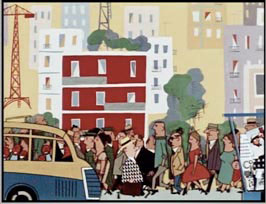
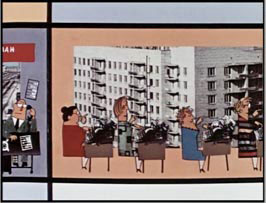
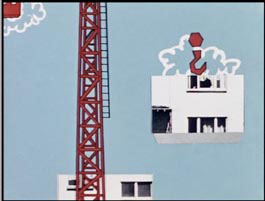
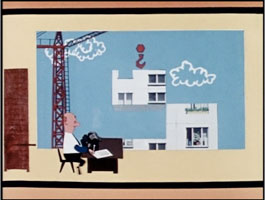
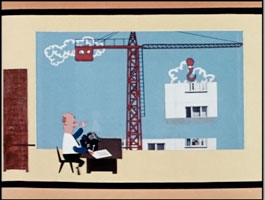
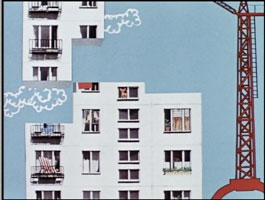
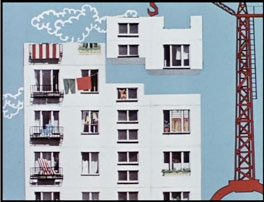
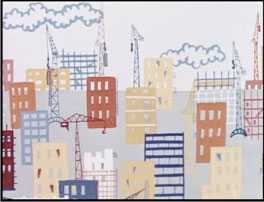
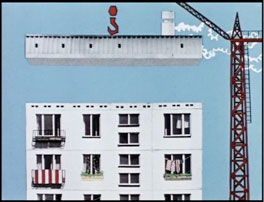
I know that Alexey Pazhitnov, the inventor of Tetris, claimed pentominoes as his inspiration, but I can't believe that living in the Soviet Union at the time he could not have been thinking about this building style (and maybe this very cartoon). If not, it's an eerie similarity, and I'm really amused.




Mike, that's beautiful and incredible. I love these aha! moments.